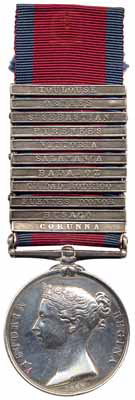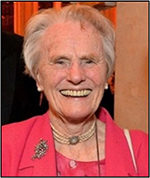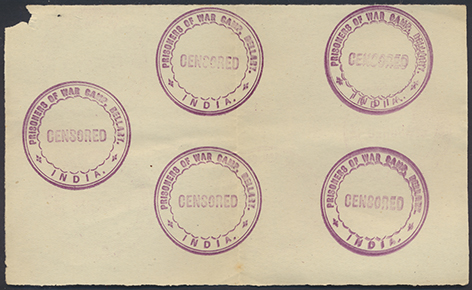The Military General Service Medal, with the 11 clasps of Corunna, Busaco, Fuentes d’Onor, Ciudad Rodrigo, Badajoz, Salamanca, Vittoria, Pyrenees, St Sebastian, Orthes and Toulouse, to W. Carden, Bugler, 95th Foot was offered in Warwick & Warwick’s auction on Wednesday 10th December 2008, where it realised £7,820.

The Rifles have been immortalised on television by the Sharpe series, adapted from Bernard Cornwell’s books. In 1800 a unit was raised from drafts of already existing British regiments to form an "Experimental Corps of Riflemen", to be named, in 1802, the 95th Regiment of Foot. The purpose of the regiment, along with that of the existing 60th Foot was to be sharpshooters, skirmishers and scouts. The 60th Foot had learned hard lessons in the war in America, fighting frontiersmen, who took every advantage of cover and concealment. The men were trained to work in open order and be versatile in their tactics. This was a new concept compared with the traditional method of regiments standing shoulder to shoulder and delivering mass volleys and bayonet charges.
They were armed with the Baker rifle, which took twice as long to load, but was considerably more accurate at range than the Brown Bess of the line regiments. The rifle was reported as being successful up to ranges of 200-300 yards. The riflemen wore dark green jackets rather than the bright red coats of the British line infantry regiments of the time, camouflage evolving as a tactic for preserving life. The Rifle Regiment used buglers rather than drummers for signalling.
The medal is correctly named to W. Carden, Bugler, 95th Foot. Only 5 MGSMs with this rank have been issued to the 95th Foot and William Carden received the most clasps. The 95th Foot received 20 medals with 11 clasps and only 15 with 12 or more clasps. A very rare rank to a most sought after regiment.




